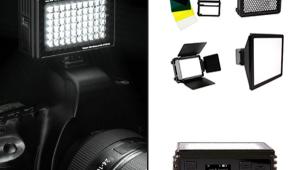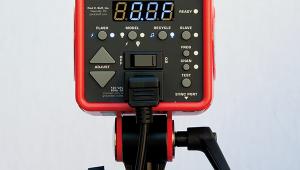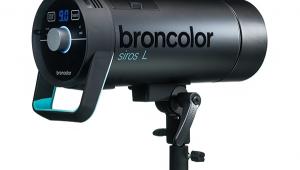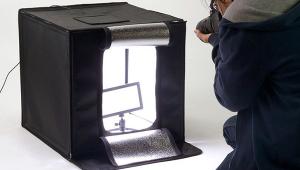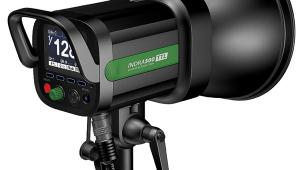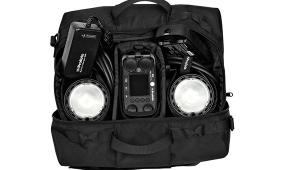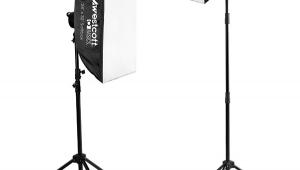Rime Lite Fame Monolights: We Test The Two-Light Kit
Rime Lite (www.rimeliteusa.com) monolights are manufactured by Hyundae Photonics Co., Ltd., a company that’s been building high-quality studio lighting gear in Korea since 1981. They’re now being distributed in the U.S.A. by Dynalite (www.dynalite.com). The Fame Monolights are available in three different models that deliver 200, 400, and 600 watt-second output. (To see technical specifications on the three Fame monolights, go to the Instant Links section of our website, www.shutterbug.com, for this issue.) The monolights feature a circular Xenon flash tube and a modeling light that’s protected by a hard vented glass cover that easily screws on or off. Two knobs on the back of each light allow you to continuously vary the output for either the flash or the modeling light. A cluster of four LED-illuminated buttons let you turn on (or off) sound, the modeling light, the built-in slave, or the ubiquitous “test.”
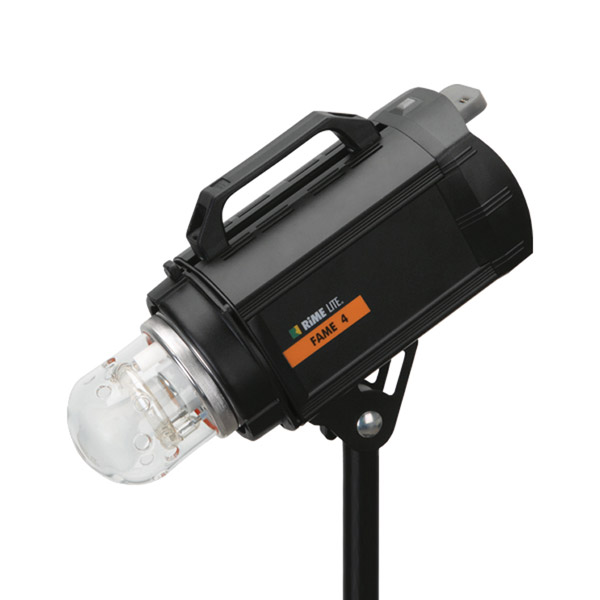
What’s In The Kit?
The two-light kit that I tested is called the RLF-2411r Fame Complete Lighting Kit and sells for $1195. The kit includes two Fame monolights, a 200 and a 400, along with a 24x24” light bank a.k.a. softbox, a speedring for mounting the light bank, an umbrella, the Swing Radio Control System, a reflector, two Dynalite (#0470) compact light stands, and a pretty nice carrying case. I also got to test one of Rime Lite’s other light banks called the Grand (see the “Ain’t It Grand” sidebar) that has 16 ribs and is like a large parabolic reflector whose shape and large surface area produces natural catchlights in the eyes, making it ideal for head-and-shoulders portraiture.

All Photos © Joe Farace
The kit includes monolight power cords and sync cables, although you don’t really need the latter unless you really like cables strewn around your camera room. That’s because the oddly named but eminently practical Swing wireless trigger does such a great job. The Swing system includes a tiny 2.4GHz hot-shoe-mount transmitter (battery included) and two receivers that don’t need batteries because they plug directly into a receptacle on the back of the Fame monolights. Oh, the transmitter uses a standard AAA battery instead of some funky garage door opener size that requires a special trip to RadioShack. Sixteen different channels can be controlled using the DIP (Dual In-line Package) switches on the Swing’s transmitter. Rime Lite claims that the indoor range is 390 feet (line of sight) and 160 feet outdoors, although I didn’t get a chance to test it at anywhere near either of those distances.
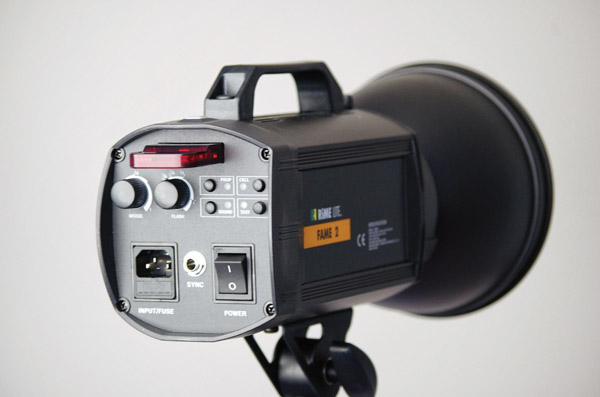
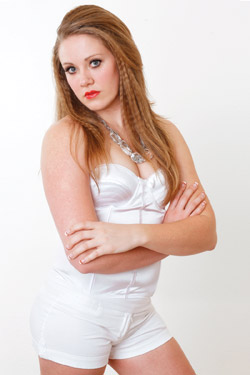
In The Studio
The rear panel of the Rime Lite Fame monolights is well thought out and logically designed. In the upper left-hand side, there are two knobs that provide continuously variable control: the second is for flash output and that’s great for getting exactly the aperture you want for depth-of-field control. The first knob is for the modeling light and I like to keep it bright enough for the camera’s AF to work but not so bright that the subject squints. If you prefer the modeling light to mimic flash output instead, just press the “Prop” (proportional) button on the four-button panel on the right-hand side.
Other buttons include Cell to turn the built-in slave on or off, Test to test fire the monolight, and Sound if you like the flash to beep or not. I go back and forth on this because the Fame monolight’s modeling light will dim after firing and brighten when recycled, but I like the beep as much as I like it when an SLR beeps to confirm focus. If you like a quiet set, just turn the Fame’s beeper off. The top of the monolight has a receptacle for the optional (but included in the Fame Complete Lighting kit) Swing receiver for remote tripping. It works perfectly and is an excellent example of producing a product that does a simple job—tripping the flash—being well integrated into the lighting system.
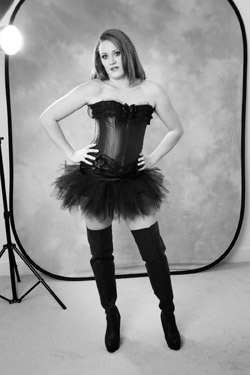
The first thing you notice about the Rime Lite Fame monolights is how well they are made and they seem rugged enough to be taken on location for environmental portraits or even weddings when you have the time and space to set up lighting. The Fame monolights ease of use make them useful for wedding photography and the ability to dial up a specific aperture makes it a snap for depth-of-field control, which is important when photographing wedding or family groups. Output of the light belies their modest rating and I shot most of the images that you see here at a mid to their mid-high—not maximum—power settings and yet was able to achieve apertures ranging from f/11 to f/9 at ISO 200.
Using the Grand softbox was simply a delight. One of lighting’s immutable laws is that the bigger the light source, the softer the light. The Grand produces a really large and soft light source and is an extremely well constructed light bank. There seems to be no skimping on materials on all of Rime Lite’s lighting modifiers. It’s quality throughout. Moving a Grand softbox close to your subject produces deliciously soft lighting and even when placed at the back of my camera room it created a wonderful quality that was much better than real window light, for example.
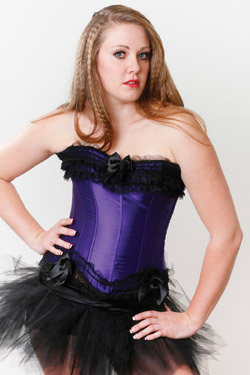
To show how similar lighting tools and techniques can produce completely different results, I created high- and low-key portraits using exactly the same lighting setup with the Grand softbox mounted on the Fame 400 monolight and the Fame 200 with its standard reflector, aimed at the back of the subject to create a rim light—an effect more visible in the low-key image than the high-key version. Only the background was changed. For the low-key shot, I used a black Westcott (www.fjwestcott.com) Scrim Jim mounted on a light stand.

High-key subjects typically consist of lighter tones, use soft lighting, and contain white or pale tones. High-key portraits often contain small darker areas such as eyes to keep them from becoming too flat and boring. It’s a good method for photographing blondes. Low-key pictures concentrate on darker tones and use higher contrast lighting with most of the subject in shadow with relatively brightly lit small areas and is a useful technique for photographing brunettes.
I really liked using the Rime Lite monolights, so much so that I hated to send them back to the manufacturer. A combination of power, versatility, and high-quality construction make the Fame monolights a standout in a crowded lighting marketplace. The kit and all of the accessories that come with it represent a Farace Best Buy for photographers just getting involved in studio lighting. And take a hard look at that Grand softbox, too. It produces some of the best lighting quality of any light bank that I’ve tested in a long, long time.
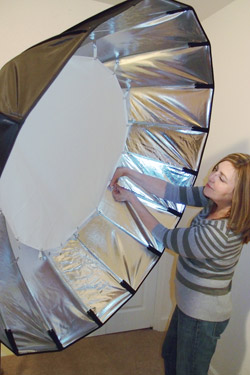
Ain’t It Grand
The Rime Lite Grand softbox is available in five different sizes: GSB-35, GSB-47, GSB-71, GSB-79, and GSB-91, with all sizes measured in inches. The material used in the Grand and the other Rime Lite softboxes is waterproof and flame resistant, allowing the softboxes to withstand hot lights up to 650 watts. Waterproofing not only makes for easy maintenance, prevents fading and discoloration, but also ensures color consistency over time. The light banks are nicely made and avoid fluorescent dyes in their construction, which can cause a blue color shift. An ultraviolet coating has been employed for color consistency.
The Grand light banks have their own unique speedring; there are not enough holes in the speedring provided with the kit to work with the 16-ribbed Grand. Because the Grand is so large it could be a two-person job to mount it on its speedring if you put it together off the Rime Lite monolight. Or so it seemed to me, being overly cautious, since it had to be returned to the manufacturer intact and I didn’t want to bend or break anything. Once mounted on the speedring, snapping the diffusion panel inside was, well, a snap, as was slipping on the front panel that attaches without touch fasteners or any other kind of fastener. It just slips on. Rime Lite prefers the term “softbox” for the Grand Series light banks and I can see why because they exhibit a flattering wraparound quality of light that I’ll bet only increases in the larger sized models.
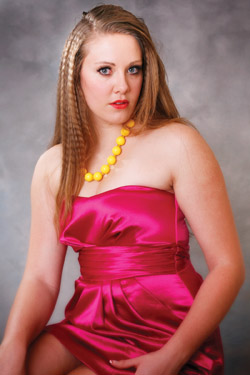
For more information, contact Dynalite Inc. at: www.dynalite.com.


